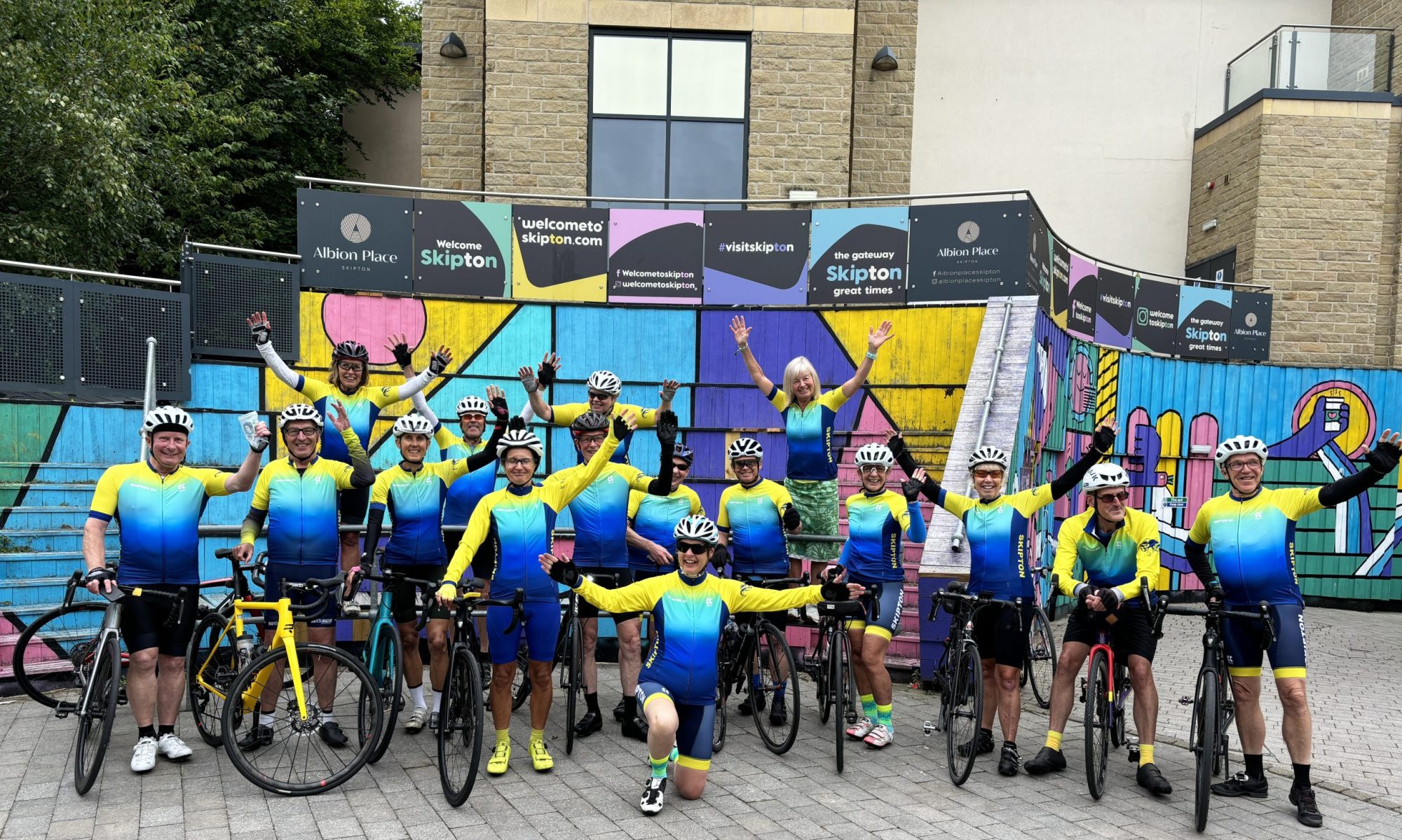All Skipton Cycling Club rides have a ride leader. The ride leaders job is to guide the group safely around the chosen route and act as a point of contact for participants. The below guidance has been produced with the aim to making a ride leader’s role easier.
Leading the ride
As ride leader you have club approval to manage the ride and ensure riders follow the Group Riding Guidance and club Code of Conduct. The leader does not have to ride at the front but should be familiar with the route. For the purpose of leading the ride, she/he is the club’s designated representative. The ride leaders’ decisions should be respected, e.g. decision to shorten a route due to weather/light/safety concerns.
Before the Ride
Reminder of club group ride guidance, expectations, mutual responsibility for safety of group. But everyone rides at his or her own risk.
If group exceeds 14 riders, divide riders into separate groups of even number if possible, leaving a 3-minute time interval between departures at the start and at subsequent stops
Separating into groups is OK, so long as: it’s defined before the ride starts out, each group has a leader and the leader is aware of the leader guidance and happy to take responsibility as ride leader.
Where groups are split for safety reasons only and there is no intended pace difference, the group should regroup together (in this case it is 1 ride, just split by 3 minutes for road safety).
These are not fixed groups and some interchanging may occur at re-grouping points, particularly on Social Rides.
Ride Leader should check with new riders to determine their experience and fitness levels and advise them of the appropriateness of the choice they are making if there is any doubt.
If it becomes necessary any member of the group should be directed to the Code of Conduct and Group Riding Guidance.Consider nominating a buddy to ride with new riders to inform and advise them of safe riding in groups.
Other members should advise them of good cycling practice during the ride.
Announce where the ride will regroup (avoiding road junctions and off the road where appropriate) and use these catch ups to point out any issues that need to be addressed.
Use another experienced rider, if possible, to “sweep” and to ensure that an inclusive pace is maintained by communicating with those ahead so that the group is smooth and constant, keeping the pace in a compact tidy unit that enables other road users to judge overtaking distances.
Rider responsibility
All SCC riders have accepted the Code of Conduct and Group Riding Guidance. In doing so, riders accept that their safety is a matter of personal responsibility.
- Riders acknowledge that they accept any risk associated with cycling on public roads and to take responsibility for riding within their own capabilities.
- Riders agree to follow the directions and decisions of the ride leader on any particular ride that they join.
Insurance and Liability
British Cycling insurance for affiliated clubs provides cover for the club and it’s officials in the event of any 3rd party claim. It does not provide cover for club members. Club members must make their own arrangements. SCC recommends British Cycling Silver or Gold membership or CyclingUK cover [formerly the CTC].
Ride Leader Prompts
You may find these short prompts helpful. A printed card version is available from Steve Wilkinson.
- Announce the route(s), leader and describe any hazards.
- Check that riders know which route they are joining
- Identify new joiners and non-members and the rule of 3!
- Promote a prompt start at advertised time of ride.
- Check numbers and names, especially of new riders, and ensure all have emergency contact details on them.
- Maintain an inclusive pace and announce first catch up point and subsequent regroups if necessary.
- Ensure arrangements for a safe return are made for anybody that cannot complete the ride and request that they subsequently notify you of their return/
- In case of accident: call emergency services and get details of 3rd parties involved. Record location, time and weather conditions. Photograph any potholes or other relevant details for future use.

